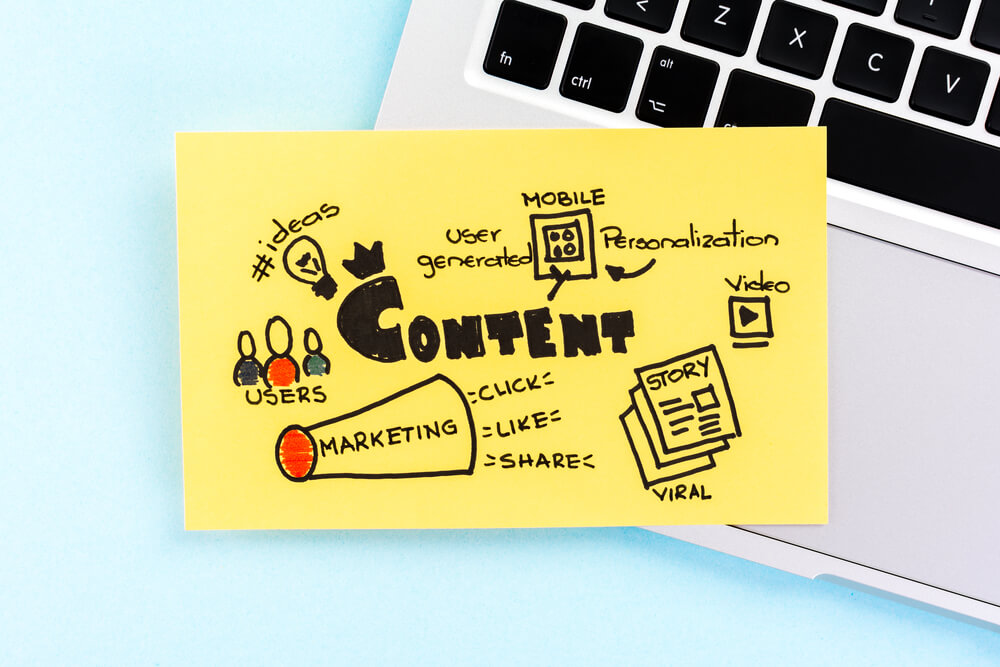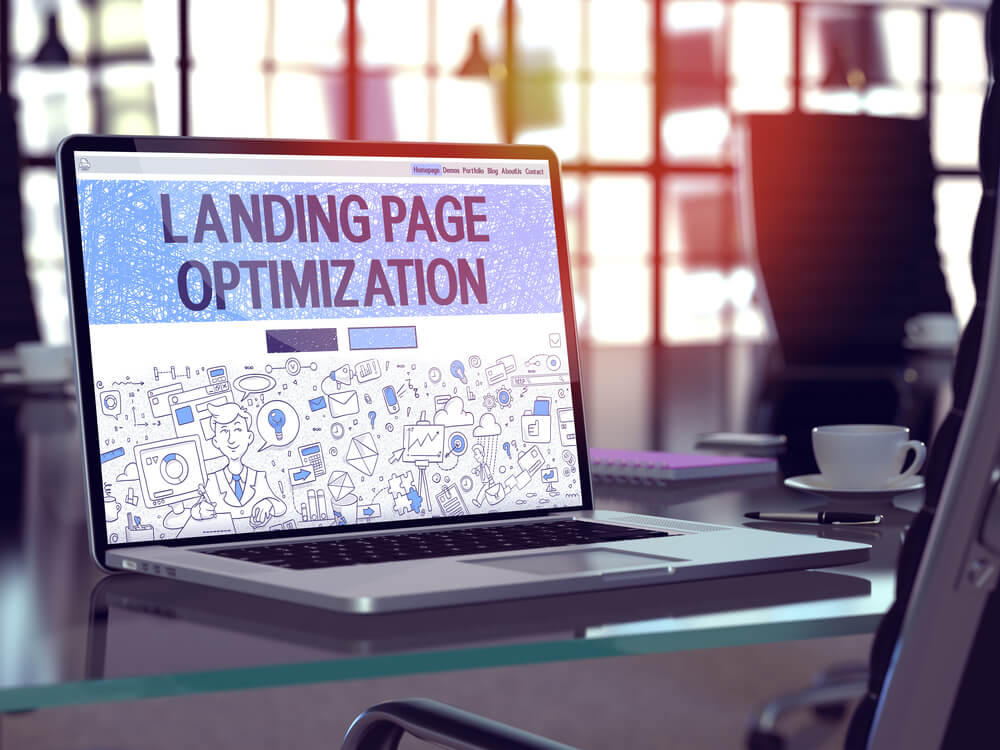
How Do You Best Optimize a SaaS Website for Buyer Intent?
Understanding buyer intent is crucial in optimizing a software-as-a-service (SaaS) website. It highlights user motivations and desires and guides a potential customer’s purchasing decisions.
Aligning marketing strategies and products with buyer intent also enhances SaaS conversion rates and streamlines customer acquisition.
This guide discusses the following factors and tips to optimize a SaaS website for buyer intent:
- Keyword research
- Content creation
- Landing page optimization
- User experience
- Social proof and trust signals
- Sales funnel
- Website performance
- Feedback and analytics data
Beat the challenges of SaaS marketing with precise audience targeting. Learn all these points below. Let’s go!
Want to know how we help SaaS businesses stand out from the crowd? Watch this video to learn how DAP makes it happen!
1. Focus Keyword Research on Buyer Intent
Focusing keyword research on buyer intent is essential in optimizing a SaaS site. It enables a deeper understanding of potential customers’ specific queries and desires. The page then attracts more qualified leads. Good keyword research aligns the content and services with the audience’s needs and pain points, increasing conversions.
Ultimately, a keyword strategy with buyer intent enhances the website’s visibility, relevance, and effectiveness.
Follow these tips to do keyword research according to search intent:
- Research the audience’s problems or challenges in each stage of their buyer journey. Use forums, social media, or surveys to determine the most common queries.
- Focus on long-tail keywords that indicate specific needs or solutions. Use tools such as Google Keyword Planner to find descriptive terms and phrases that align with buyer intent.
- Categorize keywords based on their intent (informational, transactional, navigational). Informational keywords indicate research intent, while transactional terms show a readiness to purchase.
- Study search engine results pages for selected keywords. Analyze the type of high-ranking content. Are they blog posts, product pages, or comparison articles?
- Create content clusters around different stages of the buyer journey. Identify keywords associated with awareness (e.g., “how-to” or “best practices”), consideration (e.g., “vs.” or “reviews”), and decision (e.g., “buy” or “pricing”).
These keyword research strategies help marketers better understand the buyer journey and optimize SaaS sites.
2. Create Content That Matches Buyer Intent

Tailoring content according to buyer intent is another effective strategy to optimize a SaaS site. The copy resonates better with the audience when it addresses their needs, questions, and pain points. Personalization also promotes trust and credibility.
In search engine optimization, quality content enhances relevance. It makes the website appear prominently for queries related to the buyer’s intent and attracts more qualified leads.
Align the content with the buyer’s journey with these ideas:
a. Awareness Stage
- Educational blog posts or articles address common pain points or informational queries related to SaaS.
- Infographics or visual guides are visually engaging types of content that simplify complex concepts or processes.
- Explainer videos discuss industry trends and challenges or introduce basic concepts related to the solution.
b. Consideration Stage
- Case studies or whitepapers showcase success stories or in-depth analyses of how the SaaS product solves a problem.
- Comparison guides or product reviews compare your solution with competitors or highlight the product’s strengths.
- Webinars or expert interviews cover industry-related topics or dive deeper into specific functionalities of the product.
c. Decision Stage
- Product demos or free trials provide a hands-on experience to showcase the product’s usability.
- Testimonials or customer success stories highlight experiences and positive outcomes from satisfied SaaS customers.
- Product documentation and FAQs offer detailed information or answer questions about the product’s features, functionalities, and use.
Diversifying content according to buyer’s stages effectively engages leads and even pushes them deeper into the sales funnel.
3. Optimize Landing Pages for Conversion

Optimizing landing pages for conversion improves SaaS marketing performance because it drives user actions. These pages serve as the initial touchpoints for potential customers, shaping first impressions. Refining them guides visitors toward desired actions such as signing up for a trial or subscribing.
Landing page optimization elements include compelling headlines, concise and informative content, intuitive design, persuasive calls to action (CTAs), and seamless navigation. These elements work together to maximize conversions and enhance user experience.
Here are more specific techniques for designing SaaS landing pages aligned with buyer intent:
- Incorporate targeted buyer-intent keywords in headlines, subheadings, and the body.
- Tailor landing pages for different buyer personas or segments. Use dynamic content to speak directly to their pain points or goals.
- Include images, videos, or graphics that resonate with the buyer’s journey. Suppose you have a fitness app. Use photos of people integrating the platform into their daily workout routines. Complement these with videos demonstrating the app’s user-friendly features.
- Craft concise and compelling headlines that immediately convey the value proposition. Use bullet points or short paragraphs to highlight benefits.
- Place persuasive CTAs prominently.
- Build a clean, intuitive layout that guides visitors’ focus toward high-converting elements. Use whitespace effectively, maintain consistency in design, and employ directional cues (arrows or visual hierarchy) to direct attention to CTAs and essential information.
- Design for mobile. Improve readability, quick load times, and seamless functionality and accessibility across different screen sizes.
Continuously test variations of messaging, CTAs, and layouts to further optimize for conversions. Use data-driven insights to refine the landing page’s performance.
4. Personalize User Experience
Personalized content addresses buyer intent by creating a deeper connection between the audience and the SaaS product or service. It demonstrates an understanding of their needs and increases relevance and engagement.
Personalization enhances the overall experience, making it more intuitive and valuable regardless of the audience’s journey. It also strengthens trust, driving conversions and retention.
Data analytics is a massive part of personalization. Maximize your use of it with these practices:
- Use data analytics to segment users based on their website behavior. Measure metrics such as pages visited, time spent, actions taken, and content they lingered on.
- Analyze user preferences to offer personalized recommendations and run dynamic content.
- Based on user behavior, conduct A/B tests on different website elements (CTAs, layouts, and content variations). Analyze SaaS revenue metrics to optimize the best-performing elements.
- Leverage predictive analytics models and machine learning to anticipate user behaviors and tailor real-time website experiences.
5. Use Social Proof and Trust Signals

Social proof, such as customer reviews and testimonials, carries substantial weight in the decision-making process. These testimonials are endorsements that potential SaaS customers rely on to assess your brand’s credibility and reliability.
Trust signals, such as security badges and industry certifications, reinforce confidence in data protection and quality standards. These elements cultivate trust, alleviate concerns, and influence buyer decisions.
The following strategies effectively incorporate social proof and trust signals on a SaaS site:
- Display customer reviews, testimonials, and ratings prominently on crucial pages. These include the homepage, pricing page, and product or service pages.
- Diversify testimonials for use cases, industries, or customer personas.
- Use visuals such as customer logos, video testimonials, or images alongside written reviews to add authenticity and appeal.
- Display security badges, certifications, or awards visibly, especially in checkout or contact forms.
- Incorporate dynamic elements that showcase real-time customer activity or recent reviews. It promotes positive engagement and reinforces credibility.
- Highlight detailed case studies or success stories that delve deeper into how the SaaS product solves specific client problems.
Finally, encourage and feature user-generated content, such as social media posts, images, or videos, that portray positive brand experiences.
6. Streamline the Sales Funnel
Streamlining the sales funnel is aligning each stage with a specific buyer intent. This allows you to offer tailored content and experiences to your targeted audience. The approach also develops a more seamless and relevant journey for visitors until they reach a decision.
A streamlined sales funnel optimized for buyer intent enhances user engagement, boosts conversions, and maximizes the overall effectiveness of the SaaS website.
How do you optimize the funnel? Here are strategies that remove purchase barriers:
- Research and comprehend the buyers’ specific needs, pain points, and motivations at different funnel stages.
- Craft content and messaging that directly addresses these intents. Offer solutions and information relevant to their stage in the buyer’s journey.
- Design a user-friendly and intuitive interface for seamless navigation through the funnel stages.
- Simplify forms and checkout processes.
- Display progress indicators and write clear instructions to guide users through the checkout or signup.
Regularly analyze data, conduct A/B tests, and gather user feedback to refine the funnel. Monitor and address potential friction points for improved user experience.
7. Measure and Analyze Website Performance

Measuring and analyzing website performance is critical in optimizing it for buyer intent. It provides crucial insights into visitor behavior to better understand how users interact with the content at different sales funnel stages.
The data-driven analysis also helps companies identify which content or features resonate most with the audience. The information then informs optimization strategies.
Track site performance with these tactics:
- Use Google Analytics to assess user behavior based on page views and session durations. Analyze frequently visited pages or page abandonment to know whether the content aligns with buyer intent.
- Integrate heatmaps and session recording tools such as Hotjar or Crazy Egg. They help you visualize user interactions, especially where visitors click, scroll, or spend the most time.
- Take advantage of conversion rate optimization for A/B testing. Determine which versions drive higher conversions.
- Track conversion rates for specific actions, such as sign-ups, downloads, or purchases. Measure how well the website motivates visitors to perform these steps.
- Monitor bounce rates to uncover friction points. A high bounce rate often indicates a misalignment between visitor expectations and website content.
- Measure how long visitors spend on specific pages or the overall website. Longer sessions suggest higher engagement and better alignment with buyer intent.
- Assess click-through rates, average pages per session, or return visitor rates. Higher engagement signals mean visitors find the content valuable and relevant.
8. Adjust Strategies Based on Feedback and Data
Continuous optimization based on user feedback and performance data maintains a website’s relevance and effectiveness. They guide strategic improvements using direct insights into customer preferences, pain points, and expectations.
Performance data, including metrics on engagement and conversions, validate optimization strategies and make them more data-driven and user-centric. Lastly, the iterative approach allows you to adapt quickly to market trends.
The following examples illustrate how real-time adjustments better align a SaaS site with buyer intent:
- Display personalized recommendations or targeted messages as users navigate the site.
- Offer real-time assistance through chatbots or live support to address buyer queries. Managing their immediate concerns pushes users closer to their intended actions.
- Adjust pricing displays or promotional offers in real time based on user interactions. For example, show limited-time discounts or personalized pricing options to influence purchase decisions.
- Display real-time behavior-triggered pop-ups or overlays. When used right, they offer additional tailored information, incentives, or resources that inspire conversion.
- Send real-time personalized notifications or alerts based on user preferences or recent interactions. The messages could highlight new features, relevant updates, or time-sensitive offers.
Summing Up
Optimizing a SaaS site for buyer intent means developing a focused, tailored approach to meeting audience needs and expectations. Aligning content, user experience, and offers with buyer intent enhances your brand’s relevance, engagement, and trust. It eventually leads to higher conversions and improved customer acquisition.
What steps can your SaaS company take today to align your website with buyer intent? The answer is just a call away. Contact Digital Authority Partners for expert SaaS website optimization, digital marketing, and beyond.
Want To Meet Our Expert Team?
Book a meeting directly here




